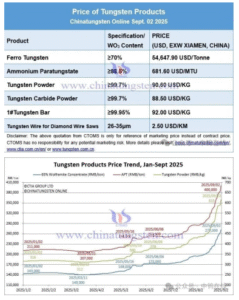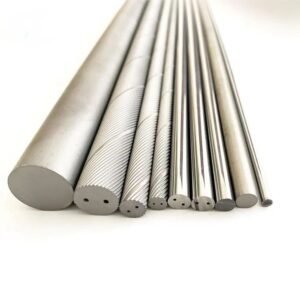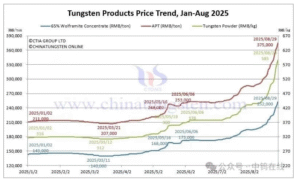Carbide inserts are essential tools in machining, offering durability and superior performance when cutting hard materials. However, not all carbide insert shapes are created equal in terms of strength. So, which carbide insert shape is the strongest?
The Pain Point: Choosing the Right Carbide Insert Shape for Durability
Machinists often struggle to choose the best carbide insert shape for optimal cutting performance, especially when high strength and durability are crucial. The wrong choice can lead to premature wear, poor cutting performance, and costly downtime. How do you ensure your carbide inserts last longer and withstand tough machining tasks?
In this article, we explore which carbide insert shape offers the highest strength for various machining needs, ensuring longer tool life, reduced downtime, and cost savings.
Why is the Carbide Insert Shape Important?
Choosing the right carbide insert shape is crucial for maximizing cutting efficiency and durability. The shape of the insert affects its contact with the workpiece, chip removal, and overall strength during cutting. Factors like the material being machined and the cutting conditions influence how well the insert performs.
Carbide inserts come in several shapes, including square, round, triangular, and more. While the differences may seem subtle, each shape serves specific purposes in various applications. Let’s dive deeper into the strongest carbide insert shapes based on their unique benefits.
What is the Strongest Shape for Carbide Inserts?
Triangular Inserts: High Strength and Rigidity
Triangular carbide inserts are among the most common and strongest shapes used in turning and milling operations. The three-edged design increases the insert’s overall strength and provides greater stability when cutting. This shape distributes the cutting force evenly across all three corners, reducing the risk of premature wear and damage. Additionally, the sharp corners and angles help in precise cutting, especially in high-speed applications. Triangular inserts are ideal for machining tough materials like stainless steel and high-temperature alloys.
Square Inserts: Versatile and Robust
Square carbide inserts are also highly popular in the industry. Their strength lies in the fact that they can be rotated to offer multiple cutting edges, extending their lifespan. The 90-degree angles of square inserts provide stability during machining, making them ideal for finishing operations that require precision and strength. The balanced geometry allows for excellent chip control, which is crucial for avoiding tool wear. Square inserts are versatile, suited for both roughing and finishing tasks, and can handle moderate to high cutting forces.
Round Inserts: Smooth Cutting with Consistent Strength
Round carbide inserts are prized for their ability to provide smooth, continuous cuts. Their shape reduces the cutting force on the insert during operation, which can extend tool life and reduce the likelihood of breakage. While not as sharp as triangular or square inserts, the round insert's durability makes it perfect for finishing tasks or machining soft materials. Their strength is primarily based on their ability to distribute cutting forces uniformly, making them excellent in applications where a smoother finish is required.
C-Lock Inserts: Enhanced Strength for Challenging Operations
C-lock carbide inserts feature an innovative design that offers exceptional rigidity and strength. The unique shape of these inserts helps to lock the cutting edge firmly, making them resistant to vibrations during cutting. This stability is especially beneficial in high-speed or high-precision operations. These inserts are highly recommended for heavy-duty turning and milling, where high-strength materials like titanium or nickel alloys are involved.
Which Carbide Insert Shape is Best for Tough Materials?
Square vs. Triangular Inserts for Tough Materials
When machining tough materials like high-temperature alloys, you need inserts that can handle the stress without failure. Triangular inserts tend to excel in these environments due to their sharpness and multiple edges, providing better cutting efficiency. Square inserts are also useful but may not perform as well under the highest pressure. Therefore, for heavy-duty tasks, triangular inserts generally provide the most robust performance.
Round Inserts for Softer Materials
For softer materials like aluminum or brass, round carbide inserts offer an edge in smoothness and precision. Their ability to reduce cutting forces allows for a clean finish and minimal wear, making them ideal for softer machining tasks. While not as strong as square or triangular inserts for tougher materials, they offer superior performance for non-ferrous materials.
How Do Coatings Affect Carbide Insert Strength?
CVD and PVD Coatings for Added Durability
Coatings like CVD (Chemical Vapor Deposition) and PVD (Physical Vapor Deposition) can significantly enhance the strength of carbide inserts. These coatings provide an additional layer of protection against wear, heat, and corrosion, which is especially beneficial when machining materials with high hardness or aggressive cutting conditions. PVD coatings are known for their superior wear resistance, while CVD coatings offer excellent heat resistance. Applying these coatings to triangular or square inserts further improves their overall durability.
Conclusion: Which Carbide Insert Shape Wins for Strength?
While triangular inserts are often considered the strongest carbide insert shape due to their rigidity and three-edged design, square and C-lock inserts also perform exceptionally well in specific tasks. Ultimately, the best choice depends on the material being cut and the required performance. For tough materials and heavy-duty tasks, triangular inserts lead the charge, while square inserts provide versatility and strength. For smoother cuts on softer materials, round inserts are a great option.





